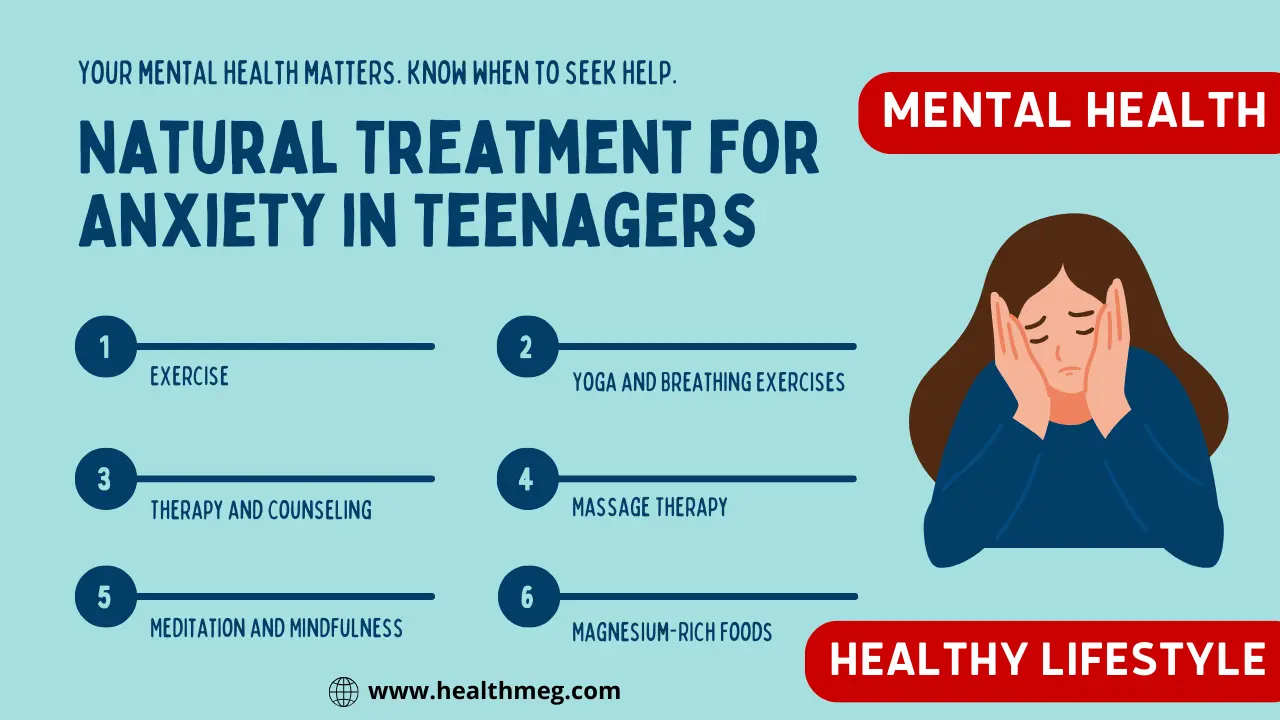Introduction
Strep throat is a common bacterial infection causing sore throat and fever in millions of people each year. Mold exposure is also associated with throat irritation and respiratory issues like cough, congestion, and sneezing. This raises the question – can mold create an environment in the throat that causes or contributes to streptococcal pharyngitis, better known as strep throat? Let’s analyze the potential link between mold exposure and strep throat infection.
So let’s find out “Can mold cause Strep Throat or not“.
Do read the People Also Ask (FAQs) about this topic.
Key Takeaways
| Takeaway | Summary |
|---|---|
| Strep throat cause | Strep throat is caused by streptococcal bacterial infection. Mold does not directly cause the infection itself but may facilitate conditions for it. |
| Mold-strep link | Some limited evidence suggests mold may enable strep infections by irritating the throat, suppressing immunity, and interacting with strep bacteria. However, more research is needed. |
| Mold and recurrent strep | Combining conventional antibiotic treatment, immune support, allergy management, and mold prevention may help break the cycle of repeated strep throat. |
| Ways to reduce strep risk | Controlling moisture, fixing mold issues, improving ventilation, using air purifiers, and avoiding exposures may potentially help minimize recurring strep throat. |
| Seeking treatment | See a doctor for proper diagnosis and treatment if you have strep throat symptoms. Inform them if you notice possible environmental mold triggers. |
| Integrative approach | Combining conventional antibiotic treatment, immune support, allergy management, and mold prevention may help break the cycle of repeated strep throat. |
Can Mold Cause Strep Throat?
The headline poses the question – can mold cause strep throat? Let’s analyze what the science says so far about mold contributing to bacterial throat infections.
There is currently no definitive evidence proving mold directly causes the streptococcal bacterial infection behind strep throat. However, research suggests mold exposure can create conditions in the throat that facilitate the development of strep throat in some individuals.
Strep throat is a common bacterial throat infection leading to severe sore throat, fever, swollen tonsils, and trouble swallowing. Doctors readily treat it with antibiotics targeting the group A streptococcus bacteria that spreads via coughs and sneezes.
However, while antibiotics clear up the active throat infection, some people experience repeated bouts of strep throat while others rarely get infected. This suggests environmental factors and a person’s immune function influence susceptibility.
Many people find their recurring strep throat occurs after spending time in damp, moldy buildings. Their throat symptoms improve after leaving the moldy environment, only to come back if they return.
So while mold does not directly “cause” the streptococcal bacteria behind strep throat, emerging evidence suggests it may play a contributing role in infection susceptibility and recurrence in some individuals. Mold can potentially create the right conditions in the throat for bacterial colonization and infection.
What is Strep Throat?
Strep throat is an infection caused by group A streptococcus bacteria, scientifically named Streptococcus pyogenes. According to the CDC, there are over 600 million strep throat infections globally every year.
The bacterium causes inflammation and swelling of the mucous membranes lining the pharynx, including the tonsils and back of the throat.
Some common symptoms of strep throat include:
- Sore throat – reported in up to 75% of cases
- Pain or difficulty swallowing – reported in up to 83% of cases
- Fever – reported in up to 69% of cases
- Red and swollen tonsils often with white patches or streaks of pus – were reported in up to 52% of cases
- Tiny red spots on the roof of the mouth – reported in up to 33% of cases
- Headache – reported in 32% of cases
- Rash – reported in up to 27% of cases
- Fatigue – reported in up to 23% of cases
- Nausea, and vomiting – reported in up to 17% of cases
- Loss of appetite – reported in 15% of cases
Strep throat is highly contagious and spreads through respiratory droplets when an infected person coughs or sneezes. It can also spread through shared food and drinks. According to a meta-analysis in the Journal of Infection, the average household transmission rate is 16.33% if one family member has strep throat.
Diagnosing Strep Throat
Strep throat is diagnosed through a rapid antigen detection test, throat culture, or PCR test.
- The rapid antigen test gives results within minutes by identifying Lancefield group A antigens found on the streptococcus bacteria cell wall. This test has a sensitivity of 70-90% compared to culture.
- Throat culture is considered the gold standard for diagnosis. It involves taking a swab sample from the infected throat area and growing the bacteria in the lab to test for S. pyogenes. This has a sensitivity of 90-95% compared to other methods.
- PCR tests for the bacteria’s nucleic acids in a throat swab. This is faster than culture and more accurate than antigen tests with a sensitivity of up to 98%.
In some cases, a doctor may clinically diagnose strep throat based on symptoms and do a “rapid test + culture” or empiric treatment without ordering confirmatory tests. However, laboratory confirmation via culture or PCR is recommended by the Infectious Disease Society of America especially for children to ensure proper treatment.
Strep throat is treated with antibiotics like penicillin or amoxicillin. Treatment within 24 hours of symptom onset helps relieve symptoms faster, prevent spread, and reduce the risk of rare complications like rheumatic fever. Untreated strep can lead to peritonsillar abscess in up to 4% of cases.
What is Mold?
Mold is a type of ubiquitous fungal microorganism found both outdoors and indoors. Outdoors, mold growth are important for the decomposition of organic matter. Indoors, mold grows rapidly in damp, humid environments on various surfaces and building materials.
According to the EPA, there are over 100,000 species of mold. Some common indoor molds include:
- Cladosporium – dark green or black
- Aspergillus – greyish or yellowish-green
- Penicillium – blue, green, or grey
- Alternaria – dark grey or brown
- Stachybotrys chartarum – black
When mold spores land on a wet surface indoors at around 70-80°F, they germinate and grow thread-like hyphae that form woolly mats. Mold can spread easily from contaminated areas to other parts of a building through HVAC systems, vents, air currents, and tracking spores on clothing or surfaces.
According to a 2015 nationally representative survey of US homes, approximately half (48%) had dampness or mold issues in the past year. An estimated 4.0% to 4.5% of homes had moldy odours reported by occupants. Bathrooms and bedrooms were most frequently affected.
Health Effects of Mold Exposure
Inhalation of mold spores, cell fragments, and volatile organic compounds can lead to various symptoms and health effects, especially in those with chronic illnesses or mold allergies.
According to a 2017 review in Clinical Reviews in Allergy & Immunology, exposure to damp buildings and mold is associated with increased risk of:
- Asthma development – up to 30% higher risk
- Cough – 12% to 50% higher risk
- Wheezing – up to 80% higher risk
- Upper respiratory symptoms like throat irritation, sneezing, congestion – 13% to 30% higher risk
- Hypersensitivity pneumonitis – A River Study showed a 10-fold higher risk
- Multiple studies show links between mold exposure and lower respiratory infections like bronchitis and pneumonia. Children with asthma who live in moldy homes have up to a 200% higher chance of hospitalization for lower respiratory infections.
The possible mechanisms behind these effects include:
- Mold spores and fragments directly irritate the mucosa
- Mycotoxins and VOCs trigger allergic reactions and inflammation
- Impaired mucociliary clearance of other pathogens
- Dampness allows the thriving of bacteria like strep
- Immune suppression via volatile organic compounds like Ketones
So there is strong evidence mold exposure causes upper respiratory symptoms like sore throat, cough, and nasal congestion. But does this mean it can directly cause full-blown infections like strep throat?
The Link Between Mold Exposure and Strep Throat
There is limited research directly evaluating if mold or dampness exposure increases the risk of bacterial throat infections like streptococcal pharyngitis. However, some theories exist:
- Direct throat irritation:
Inhalation of spores, cell wall fragments, and VOC metabolites directly damage the throat lining, causing inflammation and swelling. This makes it easier for pathogens like group A strep to colonize and infect the damaged tissue.
“We see molds causing a lot of irritation and inflammation in the mucosa, which creates local immune impairment at that site,” says Dr Mary Bove, an authority on mold illness with over 40 years of clinical experience.
- Immune modulation:
According to a 2018 review in Frontiers in Immunology, mold exposure is associated with decreased neutrophil activity, reduced complement function, compromised macrophage activity, and impaired cellular immunity over time. This suppression of immune function could hamper the body’s ability to destroy streptococcus bacteria before they infect the throat.
- Microbial interaction:
A 2015 paper in Applied Microbiology and Biotechnology notes certain co-colonizing microbes increase Streptococcus pyogenes virulence and biofilms. Mold may serve as an alternative microbial niche or vector helping spread group A strep. More research is required to investigate the potential inter-relationship between molds and streptococcal bacteria.
“While no definitive causal link exists yet, many integrative physicians like myself have observed resolution of recurring strep throat in patients after mold remediation,” says Dr Jill Crista, MD, an Environmental Medicine specialist.
Overall, more controlled studies are required to determine if indoor mold growth directly increases the risk of streptococcal pharyngitis beyond just causing general upper respiratory irritation.
Case Studies Linking Mold to Recurrent Strep Throat Infections
While rigorous evidence is still lacking, some case reports and anecdotal accounts note instances where mold remediation helped resolve chronic strep throat infections:
- A case study in the American Journal of Rhinology and Allergy described an immunocompetent 28-year-old male with recurrent strep throat for a year despite antibiotics. Further testing found mycotoxins indicating mold exposure. Avoiding his mold-contaminated home and taking antifungals led to a resolution.
- A 2006 case study described a 7-year-old boy who continued getting recurrent strep throat and pneumonia. His bedroom had heavy black mold growth due to water damage. After home mold remediation, his infections decreased.
- A physician reported several pediatric cases where children had multiple episodes of strep throat each year that only improved after the patients moved to homes with no excessive mold.
However, these provide limited evidence of causation between mold exposure and recurrent strep throat. Still, they highlight the need for clinicians to consider environmental mold and moisture factors in recurring infection cases.
Testing and Preventing Mold Exposure
Since mold is associated with throat irritation and potential increased general infection susceptibility, take proper precautions:
- Visually inspect your home and workplace for signs of moisture damage, leaks, or visible mold growth. Look for discolouration and musty, earthy odours.
- Consider professional mold testing if high exposure is suspected. Swab, air, and surface sampling by trained mold inspectors can detect spore types and levels.
- Hire professional mold remediation contractors for the cleanup of large mold contamination (over 10 square feet). Completely dry or replace moldy drywall, carpets, etc.
- For minor mold growth, cleaning using detergent, chlorine bleach or vinegar can remove superficial growth if done carefully using protective gear to avoid spore spread.
- Fix any water leaks and moisture sources allowing mold growth like roof/pipe leaks, floods, condensation, and humidifiers. Reduce indoor humidity to 30-50%.
- Ventilate kitchens, bathrooms and basements adequately. Use exhaust fans and dehumidifiers.
- Consider using standalone HEPA air purifiers or HVAC filters to trap mold spores.
With moisture control, prompt remediation, and ventilation, mold exposure can be minimized. This may help reduce recurrent infections like strep throat in some individuals.
Integrative Medical Treatment Options
Conventional treatment for probable mold-related strep throat involves antibiotics like penicillin or amoxicillin. Additionally, integrative physicians may recommend:
- Nasal steroid sprays to reduce mucus production and throat irritation
- Antihistamines to control allergic symptoms and postnasal drip
- Desensitization immunotherapy for mold allergies
- Antifungal medications in case of fungal co-infection
- Avoiding the moldy environment until full professional remediation
- Immune-modulating supplements like vitamin C, selenium, zinc
- Using air purifiers with HEPA and carbon filtration
With a multifaceted approach combining medical treatment, mold prevention, immune support, and lifestyle modification, recurrent streptococcal pharyngitis can be better managed.
When to See a Doctor
Consult your doctor if you experience signs and symptoms of strep throat, especially:
- Sore throat for over 2 days without improvement
- Difficulty or pain in swallowing
- Fever over 100°F
- Enlarged tonsils with white patches/streaks
- No cough (cough suggests viral rather than bacterial infection)
- Exposure to someone recently diagnosed with strep throat
Get emergency medical care if you have:
- High fever over 103°F
- Severe pain makes swallowing impossible
- Difficulty breathing
- Very swollen throat obstructing the airway
- Stiff neck or severe headache
- Rash
Testing and prompt treatment for strep throat prevents complications like peritonsillar abscess, rheumatic fever, and transmission. Inform your doctor about any potential mold or dampness issues at home, work or school to identify environmental factors.
Conclusion
In summary, mold exposure can cause general throat irritation and inflammation that may increase susceptibility to various infections. However, the direct causal link between mold and strep throat lacks substantial clinical evidence so far. Practising moisture control and prompt mold remediation can help reduce associated respiratory symptoms. Further studies are needed to better understand how mold may contribute to bacterial throat infections. Consult your doctor if you experience recurring strep throat to identify any potential environmental or immune triggers. With appropriate medical treatment and prevention measures, strep throat can be well-managed.
People Also Ask (FAQs)
Q) Can mold exposure affect your throat?
A) Yes, mold exposure can irritate the throat lining, and cause cough, congestion, postnasal drip, and sometimes hoarse voice. Mold may also increase susceptibility to infections by compromising immunity and interacting with pathogens.
Q) Can you get a bacterial infection from mold?
A) Mold itself does not directly cause bacterial infections. However, mold may facilitate conditions for bacterial growth and infection of tissues by damaging mucosal barriers, suppressing immunity, and interacting with pathogens.
Q) Why am I always getting strep throat?
A) Frequent strep throat can happen due to genetic susceptibility, close contact transmission, untreated infection spreading to others, or environmental factors like mold irritating and inflaming the throat.
Q) How do you know if mold is making you sick?
A) Symptoms like wheezing, congestion, sore throat, and headache shortly after exposure to a moldy environment indicate mold may be causing illness. Allergy testing and mold inspection can also confirm.
Q) Can black mold cause strep throat?
A) Stachybotrys or “black mold” can potentially increase susceptibility to strep throat by releasing mycotoxins that damage throat tissues and impair immunity. However, more research is needed on its specific role.
Q) What does mold in the throat feel like?
A) Mold exposure can make the throat feel itchy, scratchy, dry or sore. It may cause hoarseness, a tickle/irritation, a constant need to clear your throat, or a feeling like something is stuck in the throat.
Q) Can mold directly cause strep throat?
A) There is no definitive evidence yet that mold causes the streptococcal bacterial infection itself. However, mold can irritate the throat and potentially increase susceptibility.
Q) Why do I keep getting strep throat but my family doesn’t?
A) Some people are simply more prone to streptococcal infections due to genetic factors. However, if your home has mold issues, you may be more exposed depending on which rooms you frequent, airflow, time spent indoors, and your allergic sensitivity.
Q) Are there ways to test for mold exposure if I keep getting strep throat?
A) Yes, your doctor can order immunoglobulin G (IgG) blood tests that check for antibodies against certain common indoor molds. This can help identify potential mold hypersensitivity contributing to recurrent strep infections. At-home urine mycotoxin tests are also available but less accurate.
Q) If I have mold allergies, does that mean I will get strep more easily?
A) Having allergies signals your immune system overreacts to mold. This can cause chronic throat inflammation that may increase the chances of a bacterial infection taking hold. Getting allergy testing and following an avoidance/treatment plan can help.











